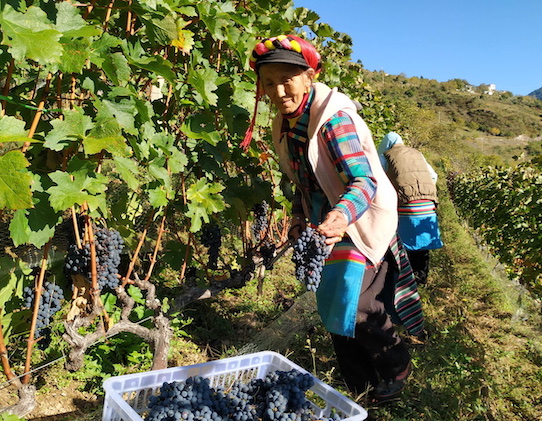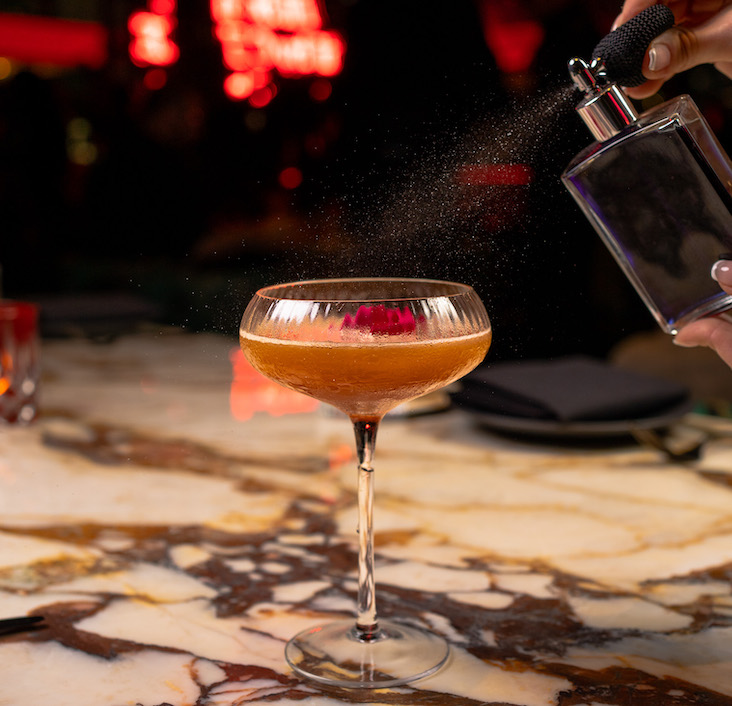China’s wine production has gone from strength to strength in recent years. Notable regions include Yantai-Penglai, which produces up to 40% of China’s wine, and Ningxia, dubbed China’s Bordeaux.
While these regions may be leading the way, that doesn’t mean that there isn’t room for other up-and-coming provinces. Yunnan, situated close to Tibet and bordering Myanmar and Laos at an altitude of 2,000-3,000m, is proving itself to be a new jewel in the crown of Chinese viticulture.
The Yunnan region is crossed by a number of rivers, including the Mekong, and has a unique climate that holds great promise for wine production. The mountainous terrain now supports an increasing number of vineyards.
Since the first planting of vines by French missionaries in the 19th century, Tibetan communities have been developing artisanal wine production. The industry is now set to surge, and is even attracting international investors such as Moët Hennessy (LVMH), which is planting cabernet sauvignon and cabernet franc in the north Yunnan.
A wine-friendly climate
While Yunnan doesn’t fall within traditional winemaking latitude, the region’s secret is in its altitude, which ensures cooler temperatures than those usually seen along the tropics. The province’s microclimate enables it to produce high-quality wine, with temperatures moderated by the Indian and Pacific Oceans, resulting in a long and fruitful growing season.
Like Mendoza, Argentina, the overall cooler temperatures and diurnal swings help create elegant wines with higher levels of acidity. Yunnan’s higher altitude also increases the amount of sun radiation and results in wines with natural pigmentation.
Meanwhile, abundant rivers and lakes provide the region with ample access to irrigation, and the diversity of climates throughout the year offer variation in the kinds of wines that can be produced. While the higher altitude will undoubtedly lead to a leaner wine, the microclimates that receive significant sunshine can create a bold and structured cabernet sauvignon.
Elegant taste profiles
Yunnan wines are unique in their elegant, subtle taste, and are somewhat removed from past efforts to emulate Bordeaux’s top Crus Classe, which resulted in over-extracted, tannic wines. Some of the best wines in Yunnan include Ao Yun, LVMH’s main project in the region, which has a bold and rich style and is similar to a Bordeaux Cru Classe.
LVMH’s first vintage of Ao Yun was 2013; the wine is priced at about $300 a bottle. Decanter magazine described Ao Yun as “a bold, dramatic and compelling debut wine from Maxence Dulou,” the French winemaker hired by LVMH to run the Yunnan wine estate.
One of the most impressive options is XiaoLing, a graceful wine with a delicate use of oak and an understated aroma. XiaoLing is a blend of cabernet sauvignon, carmenère and merlot, and is described by XiaoLing winemaker, Feng Jian, as “different from the mainstream style of Yunnan.”
“The unique landscape and high altitude adds a sense of purity and complexity to the wine,” Jian says. “We limit the extraction and the use of oak, which allows us to taste the liveliness of the terroir.”
It’s also important to note how Yunnan wines differ from others from regions in China, such as Shandong, which suffers from monsoons and heavy rain during certain parts of the year. This results in disease pressure such as mildew and noble rot, which is less than ideal for red wines. In Yunnan, however, the breeze and cooler temperatures lead to more elegant wines, and typically, healthier fruit.
A growing wine industry
While Yunnan’s wine industry used to rely on the Chinese hybrid grape varieties rose honey, French wild, and crystal, producers there are now planting international varieties such as cabernet sauvignon and chardonnay.
Although the region doesn’t yet have an export brand—most of its production is sold within China—the fairly recent arrival of LVMH to the area holds huge promise for reaching a wider range of fine-wine consumers. Other main wine companies in Yunnan include Yunnan Red Wine Co., Shangri-La Winery Co., the Spirit of Highland Winery, and Baima Winery.
Exciting boutique producers are also emerging, and XiaoLing is now being exported in small quantities to France. Priced at about $90 per bottle, XiaoLing is reaching a specific category of open-minded consumer in France now known as the “adventurous connoisseur.”
While there is potential for white wines—particularly chardonnay—to grow in cooler sites, the demand for red wine in China continues to dominate. Even in areas where white wine consumption is picking up, it still accounts for just 15% to 20% of wine purchases. So the Yunnan region will likely continue to produce exclusively red wines.
Yunnan might be the new kid on the block, but it’s already proving that it deserves its place as a key Chinese wine region with a unique offering. With the Chinese wine market having grown explosively during the past decade, there will be room for not only Yunnan’s established companies, but also its smaller, passion-owned projects to have their seat at the table.
Émilie Steckenborn, a certified sommelier and wine educator, is the creator of Bottled in China podcast and an expert in the Chinese wine industry.
For more on unique wines, see Living The Languedoc, Uncorking Corsican Wine, Unsung American Wine Regions and Bulgarian Rhapsody.







